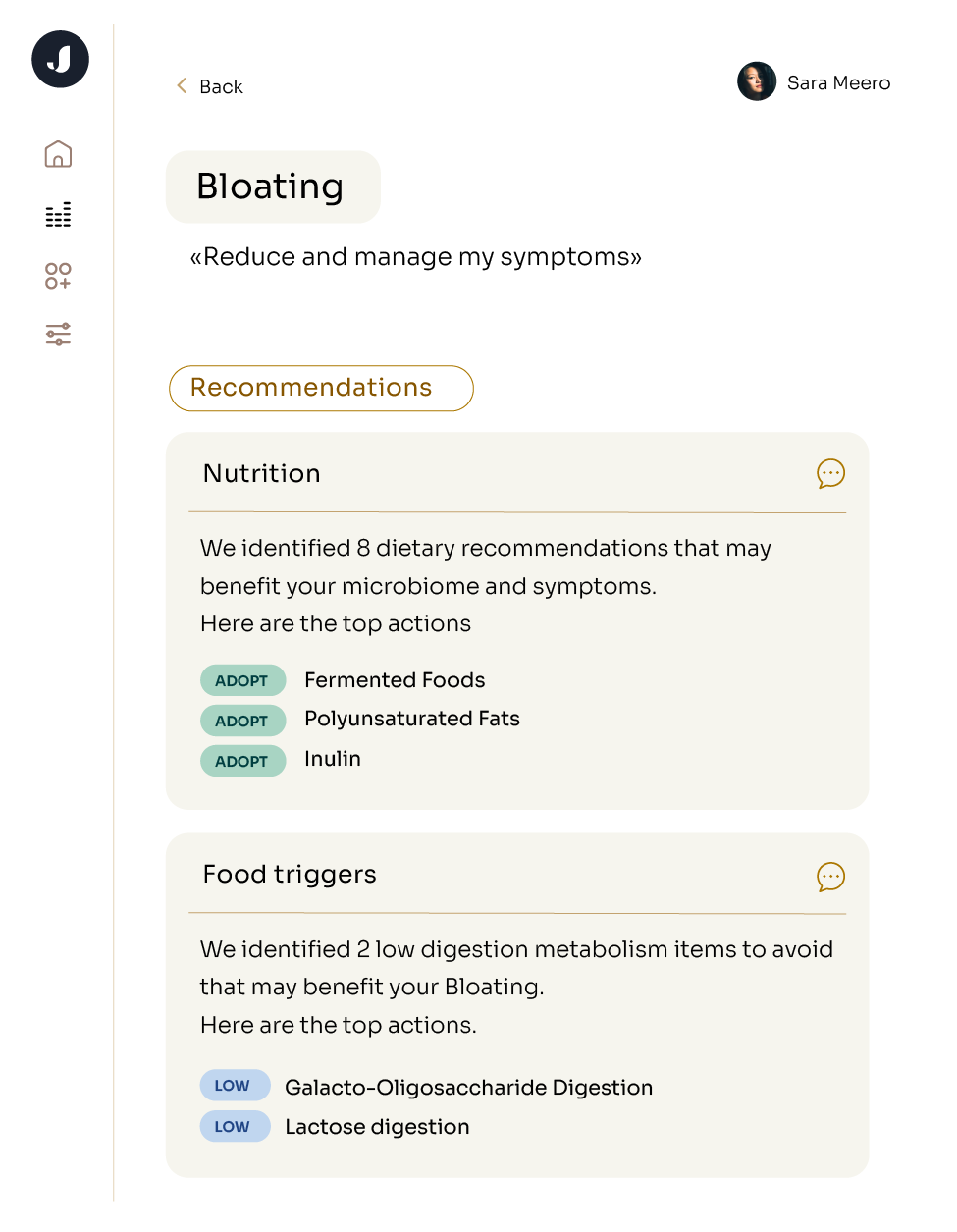Jona does not sell probiotics. That’s intentional: our goal is to arm you with information about your gut health, not to push specific interventions. However, our customers frequently approach us for guidance on shopping for probiotics, and this guide offers a blueprint for finding the right probiotic for you.
Choosing the right strain for you
Start your probiotic journey by understanding where your microbiome is today. Without this information, it’s difficult to know which bacterial strains might benefit you specifically. A Jona profiling kit can give you an idea of the common gut microbes that are relatively high or low in your sample, and depending on your results, may recommend foods and probiotic strains personalized to you.
Where to look
Jona does not endorse specific probiotic brands because despite their popularity, their usage, dosage, and duration remain contentious. Instead, we recommend you start with these World Gastroenterology Organization-approved guides to probiotic products available in the US and Canada. These tools offer an easy way to see which products have been tested for which health issues, complete with links to the research supporting their use.
Additionally, our customers and dieticians in Canada find that La Parapharmacie, Avril Supermarché, and Idunn Technology carry quality probiotic products.
Reading a probiotic label
It’s worth it to read the fine print on your probiotic label. Here are some key items to note:
Strain or Blend Identification
The strain indicated which type of bacteria is included. Here’s an example of a strain:

Jona tip: The World Gastroenterology Organization encourages probiotic manufacturers to deposit their strains in an international culture collection, which will denote the strain with a series of letters and numbers at the end of the strain name, e.g. Lactobacillus rhamnosus ATCC 53103 (source). The ‘ATCC 53103’ tells you that the strain has been cataloged by an outside party.
Colony Forming Units
The number of CFU included in a probiotic is often listed on the label. The National Institutes of Health recommends a CFU of at least 1 billion.
Dosage or Serving Size
The label may specify at what time of day to take a probiotic, if you need to take the probiotic with food, or any other important information.
Expiration Date
Probiotics are live microorganisms with a limited shelf life. Check the expiration date to ensure that the bacteria are still alive when you consume them. Do not take probiotics that are past their expiration date.
Storage Instructions
Some probiotics may require refrigeration to maintain their potency.
Third Party Testing or Certifications
Products that undergo third-party testing or carry certifications from reputable organizations may offer an extra layer of assurance regarding the quality and potency of the probiotic.







